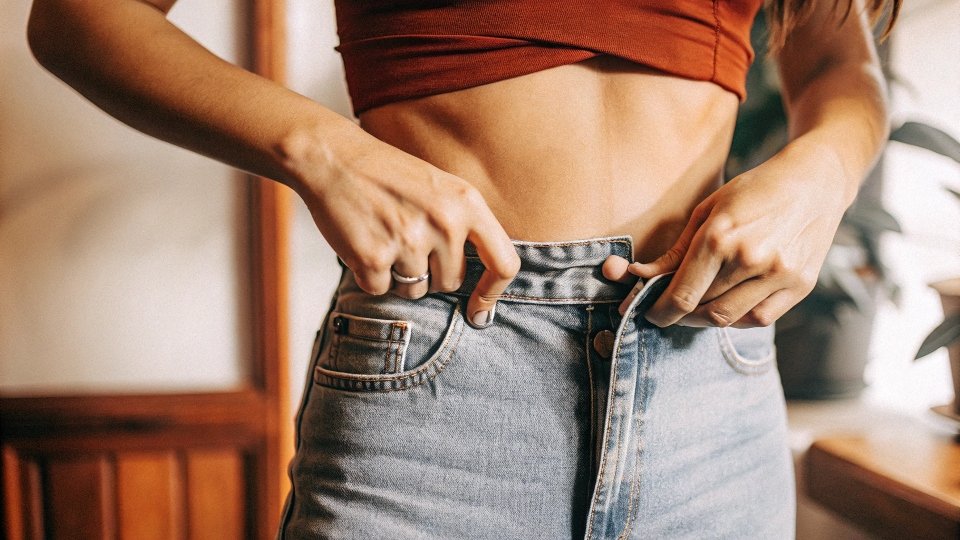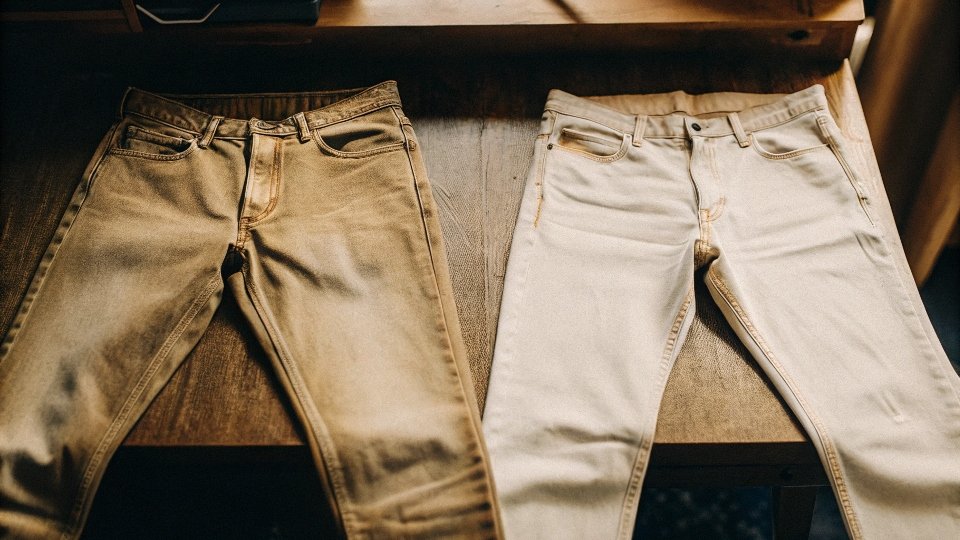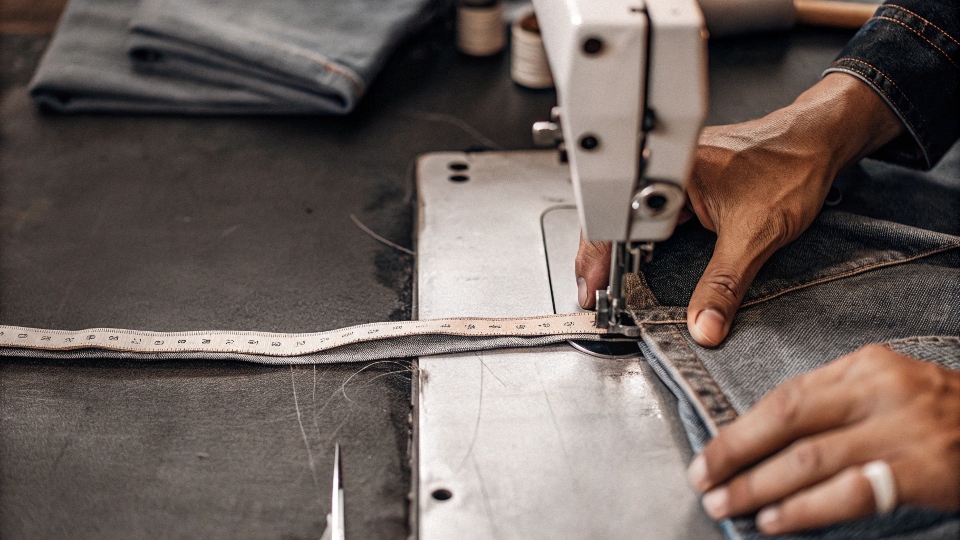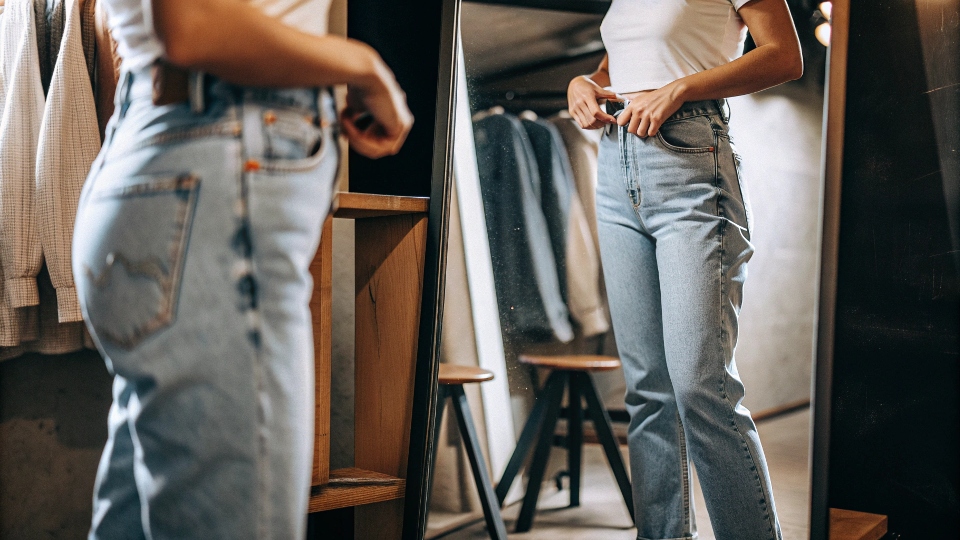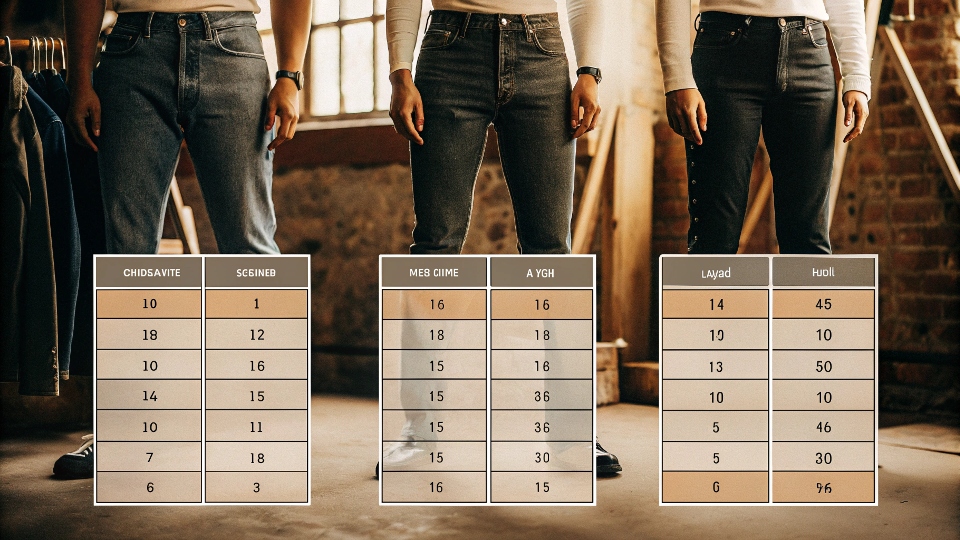Your favorite jeans feel a little too tight after washing. You're worried you might have to give them up. But what if you could make them fit perfectly again?
Yes, you can stretch jeans1 to make them looser. The best method depends on the fabric. Stretch jeans relax easily with wear and water, while non-stretch denim requires more effort.
In my decades of making jeans, I've seen every kind of denim. I know how each type behaves under stress. A designer like Dean understands that the fabric's composition dictates how much it can give.
The key is knowing whether your jeans have spandex in them or not. Let's look at how different jeans react to stretching and how you can get the best results for your pair.
Do Stretch Jeans Get Looser on Their Own?
You bought stretch jeans that fit perfectly, but now they feel baggy after a few wears. You wonder if they will keep stretching out and lose their shape completely.
Yes, stretch jeans naturally get looser with wear. The elastic fibers, called spandex, relax over time. Regular activities like sitting and walking will stretch the fabric, especially around the waist and knees.
This is a core characteristic of stretch denim. The magic ingredient is spandex, also known as Lycra or elastane. When you move, these elastic fibers stretch. When you rest, they are supposed to snap back to their original shape.
Spandex Fatigue
Over time, these fibers get tired. This is what we call "spandex fatigue." They lose some of their ability to recover fully.
This is why your jeans feel looser at the end of the day than they did in the morning. This effect is most noticeable in areas that get a lot of stress, like the waistband, hips, and knees.
The Break-in Process
This isn't just about the spandex. The cotton fibers in the denim also break in. They soften and conform to your body shape.
This combined effect of spandex relaxing and cotton softening is what makes your stretch jeans feel more comfortable and a bit looser after a few wears. How you wash them also matters.
Hot water and high heat in the dryer can accelerate this process, but they can also damage the spandex permanently, leading to jeans that look saggy instead of just relaxed. Gentle washing is always best.
Can Jeans Actually Be Made Bigger?
Your non-stretch jeans are just a bit too snug. You love the look but hate the discomfort. You're searching for a reliable way to add a little more room.
Yes, jeans can be made bigger. For stretch jeans, you can manually stretch them using water to gain about an inch. For non-stretch denim, a tailor can add more room by letting out the seams.
Making jeans bigger depends entirely on the fabric and how much extra room you need. There are two main ways to do this: stretching the fabric itself or an alteration.
Stretching Methods
For jeans with stretch, a simple technique works well. Get the waistband and hip area damp with warm water. Then, put them on.
The water helps the spandex and cotton fibers relax. You can then physically pull on the waistband or do some lunges and squats. This can give you an extra half-inch to an inch.
You can also use a waistband stretcher tool. For 100% cotton jeans, this method is less effective. You might gain a tiny bit of room, but it won't be dramatic.
Sewing Modifications
The most effective way to make non-stretch jeans bigger is through sewing. A good tailor can open up the center back seam of the waistband.
Sometimes, there is extra fabric inside the seam called a seam allowance. The tailor can let this out to give you up to an inch.
If there's no extra fabric, they can insert a small matching piece of denim. This is a more complex job but can add significant room to the waist and hips without damaging the original fabric.
Should Jeans Fit Tight When You First Buy Them?
You're trying on jeans and they feel tight. The salesperson says they'll stretch, but you're afraid they'll stay uncomfortable forever. You don't know if you should buy them.
It depends on the fabric. Stretch jeans should feel snug but not painful, as they will loosen up. Non-stretch jeans should fit comfortably from the start, as they have very little give.
This is one of the most common questions I get. Telling a customer how a pair of jeans will break in is crucial. The advice changes completely based on the fabric composition.
For Stretch Jeans
When you buy jeans with 2% or more spandex, you should choose a pair that feels snug. I don't mean painfully tight where you can't breathe or sit down. But they should feel firm and hold you in.
This is because, as we discussed, the spandex2 will relax. They can loosen up by as much as a full size after a few days of wear.
If you buy stretch jeans that are perfectly comfortable in the fitting room, they will likely feel too baggy within a week. So, a snug initial fit is a good sign.
For Non-Stretch and Raw Denim
The rule is the opposite for 100% cotton denim, especially raw denim3. These jeans will not stretch much.
The fabric will soften and mold to your body, but it will not expand significantly in size. You might get a half-inch of give in the waist over months of wear, but that's it.
So, when buying raw denim, it must be comfortable from the start. You should be able to button them without a struggle and squat down. If they are painfully tight, they will stay painfully tight.
How Much Can You Realistically Stretch a Pair of Jeans?
You need to stretch your jeans but you have no idea how much give they actually have. You're worried about overstretching them and causing permanent damage or rips.
Realistically, you can stretch the waist of stretch jeans by 0.5 to 1 inch. For non-stretch denim4, you can only expect about 0.2 to 0.5 inches of give through stretching alone.
The amount of stretch you can get is limited by the fabric's structure. Pushing it too far will break the fibers, not stretch them. As a manufacturer, we understand these limits precisely. Here is a simple guide to what you can realistically expect.
| Jeans Type | Typical Waist Stretch | Thighs & Knees Stretch | Note |
|---|---|---|---|
| Stretch Denim (2-5% Spandex) | 0.5 - 1 inch | 0.3 - 0.8 inch | Easiest to stretch. Use water and wear. |
| Comfort Stretch (1% Spandex) | 0.4 - 0.7 inch | 0.2 - 0.5 inch | Some give, but less than high-stretch. |
| 100% Cotton / Raw Denim | 0.2 - 0.5 inch | 0.1 - 0.3 inch | Very limited. Stretching happens over months. |
The most important thing to understand is that you cannot change the fundamental size of the garment by more than a small fraction.
Attempting to stretch a size 28 pair of jeans to fit a size 30 body will just result in torn seams and damaged fabric. The goal of stretching is to fine-tune the fit for comfort, not to change the size completely.
The length of jeans has almost no stretch at all, as the vertical threads (the warp) are under high tension during weaving and are not designed to give.
Conclusion
You can definitely stretch jeans for a better fit. Just remember to match your method to the fabric type. Stretch denim is forgiving, while non-stretch denim requires more patience.
-
Explore how stretch jeans function and learn effective methods to stretch them for a better fit. ↩
-
Discover the role of spandex in denim and how it contributes to the comfort and fit of your jeans. ↩
-
Understand the characteristics of raw denim and why it requires special care. ↩
-
Understand the unique properties of non-stretch denim and how to care for it properly. ↩

